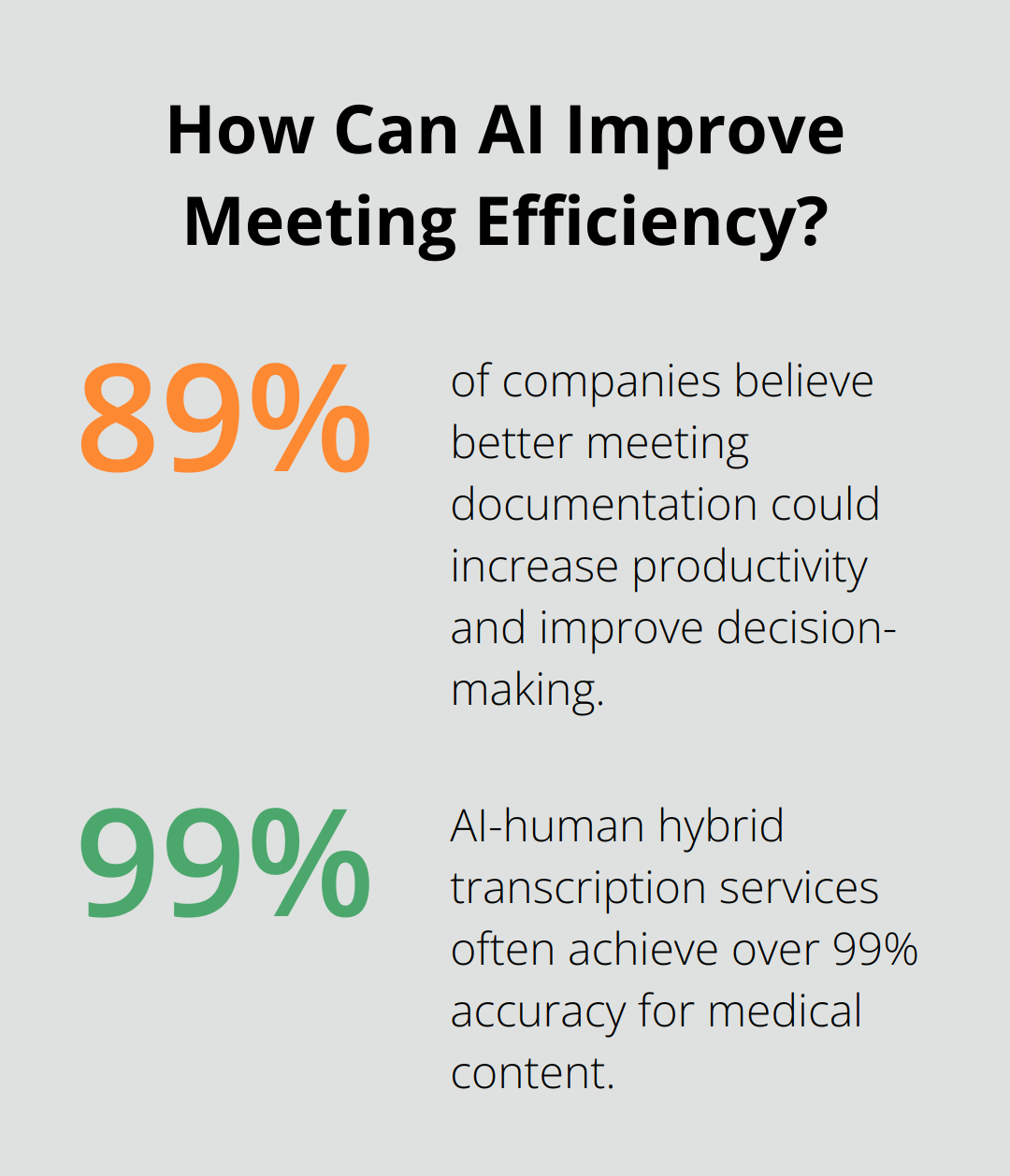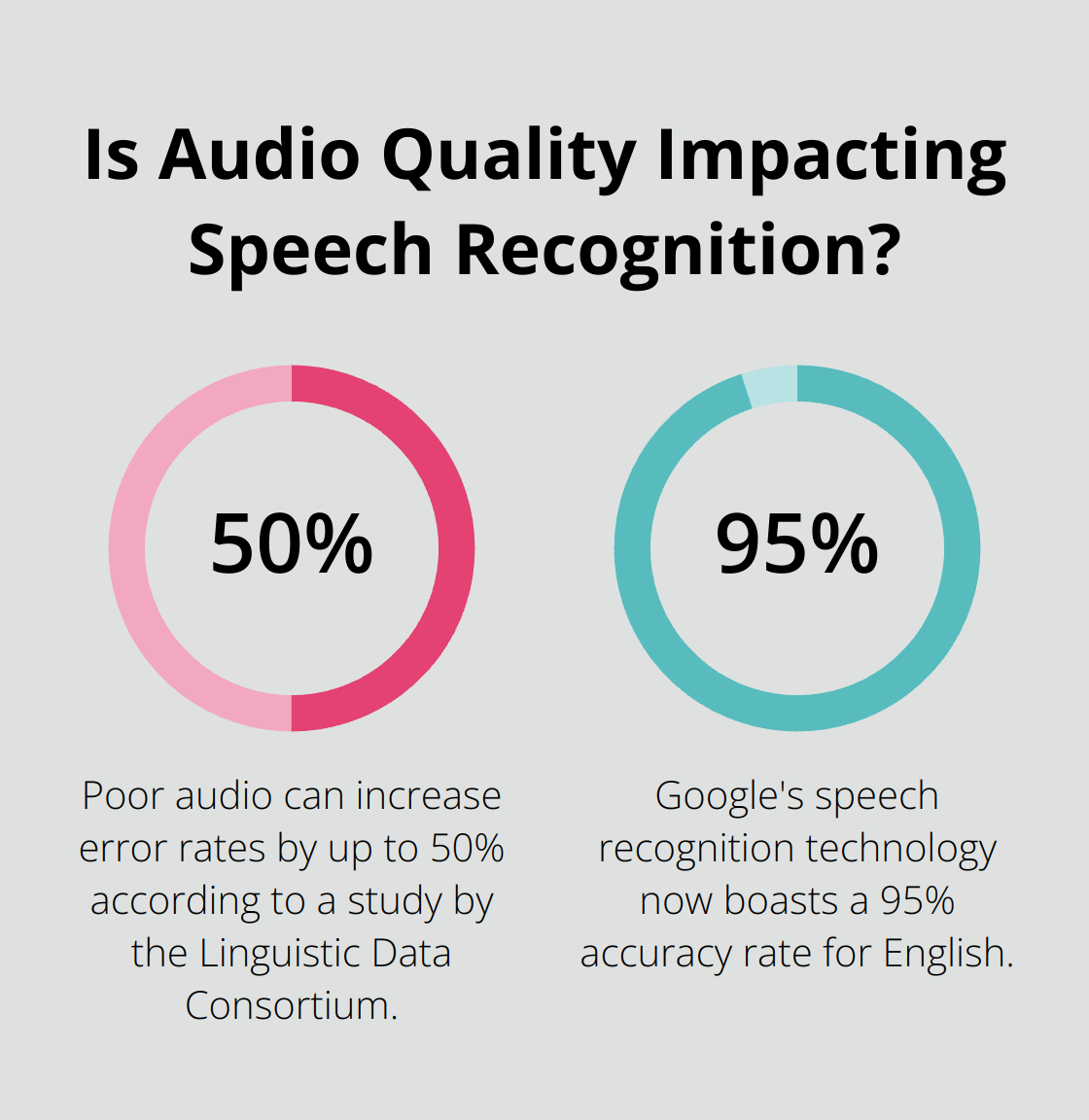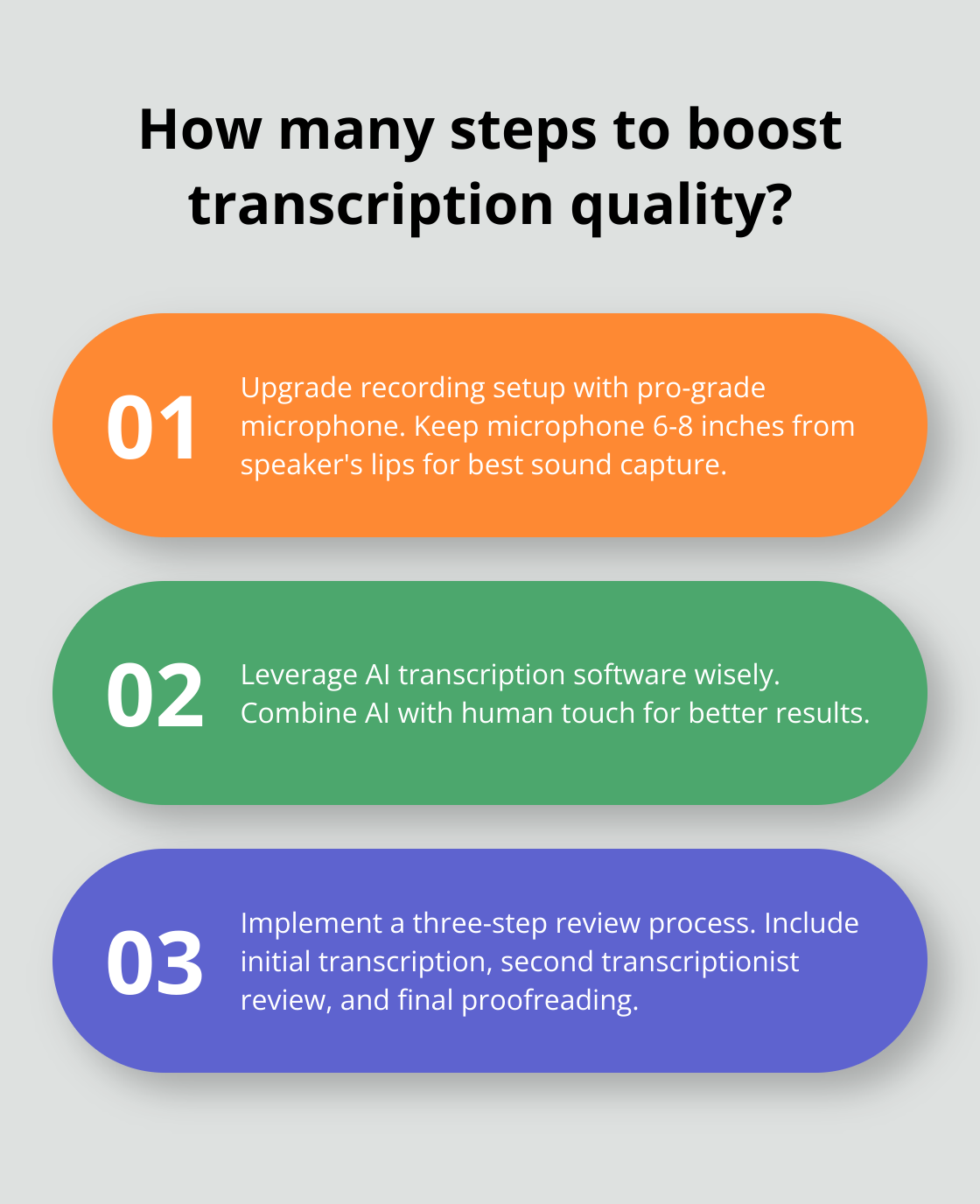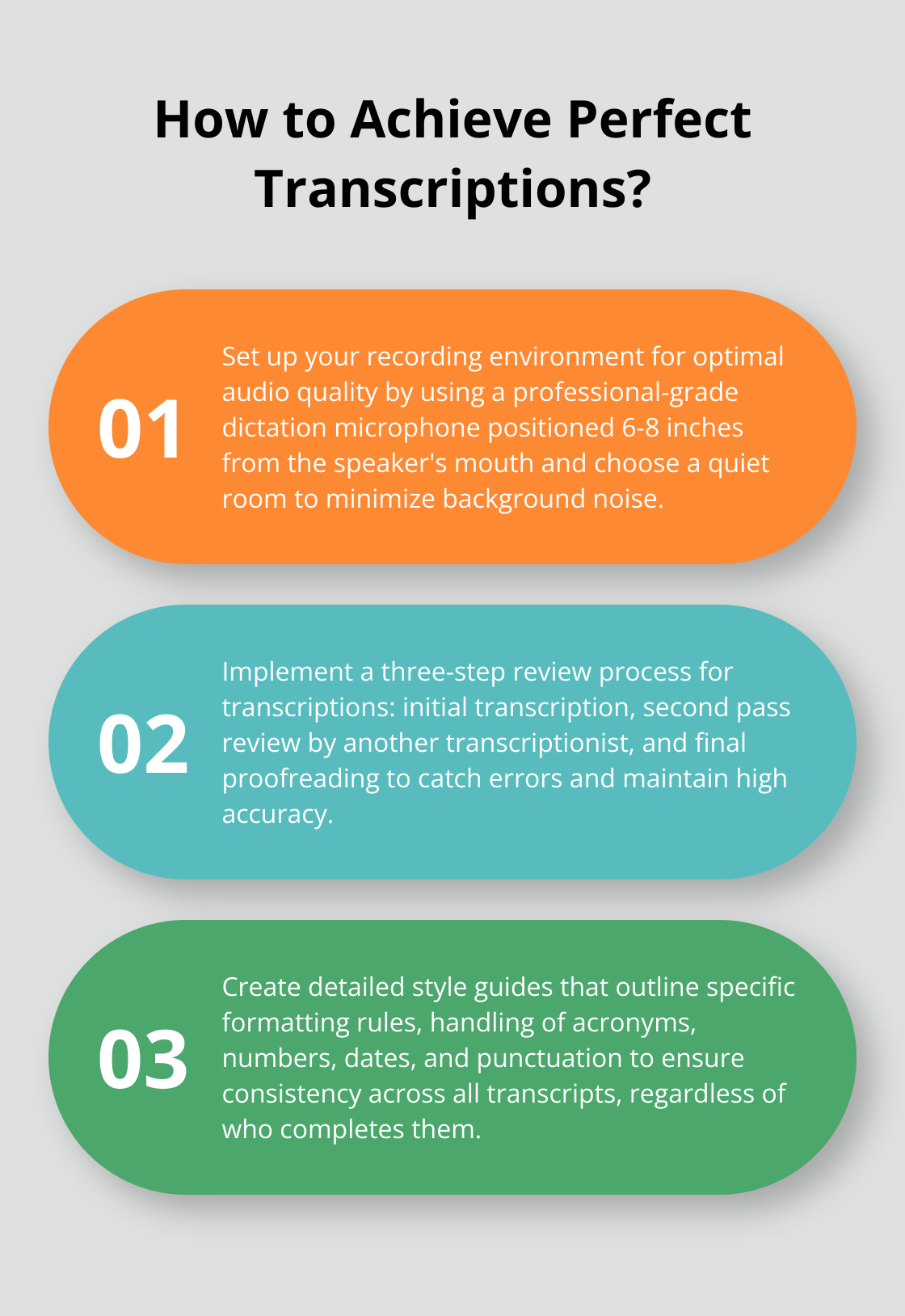Transcription quality can (quite literally) make or break your business—no exaggeration here. At ScriberJoy, we’re well aware of just how crucial spot-on transcripts are across the board, be it for the legal eagles or the healthcare heroes.
In this guide? We’re diving into the nuts and bolts—the key factors that mess with transcription quality, and we’ll dish out tried-and-true strategies to crank up your accuracy dial. So, buckle up… you’re in for some practical tips and expert insights to ensure your transcriptions hit the bullseye every single time.
What Makes a High-Quality Transcription?
The Essence of Transcription Quality
So, you’re transforming some audio or video into a slick piece of writing. What really makes it top-notch? Accuracy, consistency, and usability-they’re the holy trinity here. A high-quality transcription doesn’t just jot down words; it captures every single word, nuance, and context from the original source. The result? A document that’s as smooth and informative as your favorite podcast.
Real-World Impact of Accurate Transcriptions
Legal Field
Picture this: you’re in the legal field, where everything hinges on precision. One slip-up, one tiny transcription error, and boom-mistrials and overturned convictions. According to the American Bar Association, a single misplaced word can twist a testimony’s meaning completely, proving just how important nailing these words is.
Healthcare Sector
In healthcare, lives literally depend on getting those transcriptions right. We’re talking about medical transcriptions keeping patients safe. A study published in JAMA Network Open digs into errors found by patients reading their notes. It’s a big spotlight on the need for spot-on documentation in medicine.
Business Environment
Now, in the business world, you know what they say: time is money. Quality transcriptions from meetings and interviews can be game-changers, driving better decisions. Owl Labs says a whopping 89% of companies think better meeting documentation could rev up productivity and improve decision-making.
Common Transcription Challenges
Even the pros hit roadblocks-it’s not all smooth sailing. Transcriptionists face:
- Background noise that’s louder than a rock concert
- Everyone talking over each other
- Thick accents or local slang
- Technical chatter and buzzwords
- Inconsistent rules and formats-messy, right?
The Role of Technology in Transcription
Let’s talk tech-AI-powered transcription tools are the hot thing, but they’re still not perfect. A Stanford University study shows error rates hitting 5.9% even in general content, and don’t even get us started on specialized lingo.

But here’s the kicker-a lot of services, ScriberJoy included, are blending AI with human smarts to get it right. This tag-team approach means they often hit over 99% accuracy for medical stuff. So, as we look ahead, keeping transcription quality high is a juggling act. Buckle up, and let’s dive into what shapes transcription accuracy and how to tackle those pesky challenges.
What Impacts Transcription Quality?
Audio Clarity: The Foundation of Accuracy
Audio quality-it’s the make-or-break factor for transcription accuracy. There’s this study by the Linguistic Data Consortium that sheds light: poor audio can hike error rates by up to 50%. Yeah, you read that right-50%! So, what’s the playbook for ace audio?
- Spring for some top-notch recording gear.
- Use those directional microphones (they’ve got the stamp of approval from the Audio Engineering Society).
- Find a nice, quiet nook to record.

Even tiny tweaks in audio clarity? They can snowball into big wins in accuracy.
Human Expertise: The Power of Skilled Transcriptionists
AI’s all the rage, but human expertise? Still the MVP. Ever wonder how to break into legal transcribing? You start with a high school diploma and some on-the-job know-how. But for fatter paychecks and more job options, aim higher in the qualifications department.
Training’s the secret sauce. When transcriptionists dive deep into fields like medicine or law, they nail those gnarly technical terms. Take this example: The Association for Healthcare Documentation Integrity makes medical transcriptionists jump through hoops-rigorous exams, that is-to ensure they’re on point.
Technological Tools: Boosting Efficiency and Accuracy
When it comes to specialized software, it’s like strapping a turbocharger to your transcribing. We’re talking foot pedals for playback finesse, text expanders for those rinse-and-repeat phrases-all to amp up speed and accuracy.
AI-powered software is on the rise too. Google’s speech recognition tech? Now flaunting a 95% accuracy rate for English. But, there’s a hiccup-AI still fumbles with accents and niche vocabulary. This is where human savvy steps in, especially critical in medical transcription.
Quality Control: The Final Safeguard
Quality control-the unsung hero against slip-ups. Here’s a three-step game plan from the Transcription Certification Institute:
- Initial transcription.
- Second pass review by another pair of eyes-a fellow transcriptionist.
- Final round of proofreading.
Style guides and formatting standards are your friends. The American Psychological Association has these rock-solid transcription guidelines-they say exactly how to handle pauses, those pesky non-verbal sounds, and who’s speaking when.
Regular check-ups? Indispensable. The National Court Reporters Association thinks it’s a good call to comb through at least 10% of all transcripts for a quality reality check. This keeps you on your toes, spotting chances to up your game and keeping those standards sky-high.
What’s next? We’ll dive into best practices to escalate your transcription skills, piggybacking off these foundational accuracy and reliability factors.
How to Boost Your Transcription Quality
Upgrade Your Recording Setup
Let’s start at square one-audio quality. Want top-tier transcription? You gotta invest in a pro-grade dictation microphone. Aim to keep it 6-8 inches from the speaker’s lips for the sweetest sound capture. And yeah, shutting out background distractions by picking a quiet room is a no-brainer.
Leverage AI Wisely
AI transcription software? Oh, it’s come a long way, baby. But still, it fumbles with accents and niche vocabulary (let’s not kid ourselves). Think of AI as your sous-chef-great for the heavy lifting, but a human touch is the secret sauce. That hybrid mix? It’s your ticket to better results.
Implement a Multi-Step Review Process
One pair of eyes-just won’t cut it if you want polished transcription. Let’s talk about a three step process to get you to the top:
- Kick things off with the initial transcription
- Pass it to a second transcriptionist for a fresh look
- Wrap it up with final proofreading

Seems like a lot, right? Maybe, but it’s the gold standard if you’re aiming to stay top of the heap.
Prioritize Continuous Training
Want to keep your transcription game sharp? Then, continuous training is your bread and butter. Tap into resources from the Association for Healthcare Documentation Integrity. Schedule those training sessions and dive into:
- Mastering industry lingo
- Avoiding common blunders
- Adapting to new tech and techniques
Establish Clear Style Guides
Let’s talk consistency-it’s the name of the game in transcription. Craft those style guides to spell out:
- Your formatting playbook
- How you tackle acronyms and shorthand
- A game plan for numbers and dates
- The lowdown on punctuation
This way, no matter who’s on the job, your transcripts speak the same language.
Monitor and Analyze Performance
Time to geek out on the metrics. Keep an eye on those KPIs to uncover gaps. Key figures to track:
- Your accuracy scoreboard
- The turnaround clock
- Customer happiness quotients
By crunching these numbers, you’ll zero in on where your transcription process could use a tweak or two and drive smart improvements.
Final Thoughts
Alright, so let’s rap about transcription quality – it’s the unsung hero that holds the megaphone in communication across a whole bunch of industries. You’ve got your legal eagles and your doc squad – all relying on getting the word-for-word goods to make those crucial decisions. We walked through some key players that beef up transcription quality, like having audio as crisp as a high-def concert, tapping into human smarts, and some cutting-edge tech wizardry.

Want to up your transcription game? Simple. Throw some dough at top-notch recording gear and sprinkle in AI tools, but don’t let them run the whole show. Set up a solid double-check system, keep training up to snuff, and create some user-friendly style guides. Keep an eye on performance – like a hawk – to keep the bar high and sniff out those weak links.
And over here at ScriberJoy, we get it – transcription quality is a big deal, especially in healthcare. Our medical transcription software isn’t just smart; it’s got AI brains blended with a human touch for top-tier accuracy. This way, health pros can zero in on what really matters – patient care, while we handle the precise paperwork dance.

Leave a Reply
You must be logged in to post a comment.